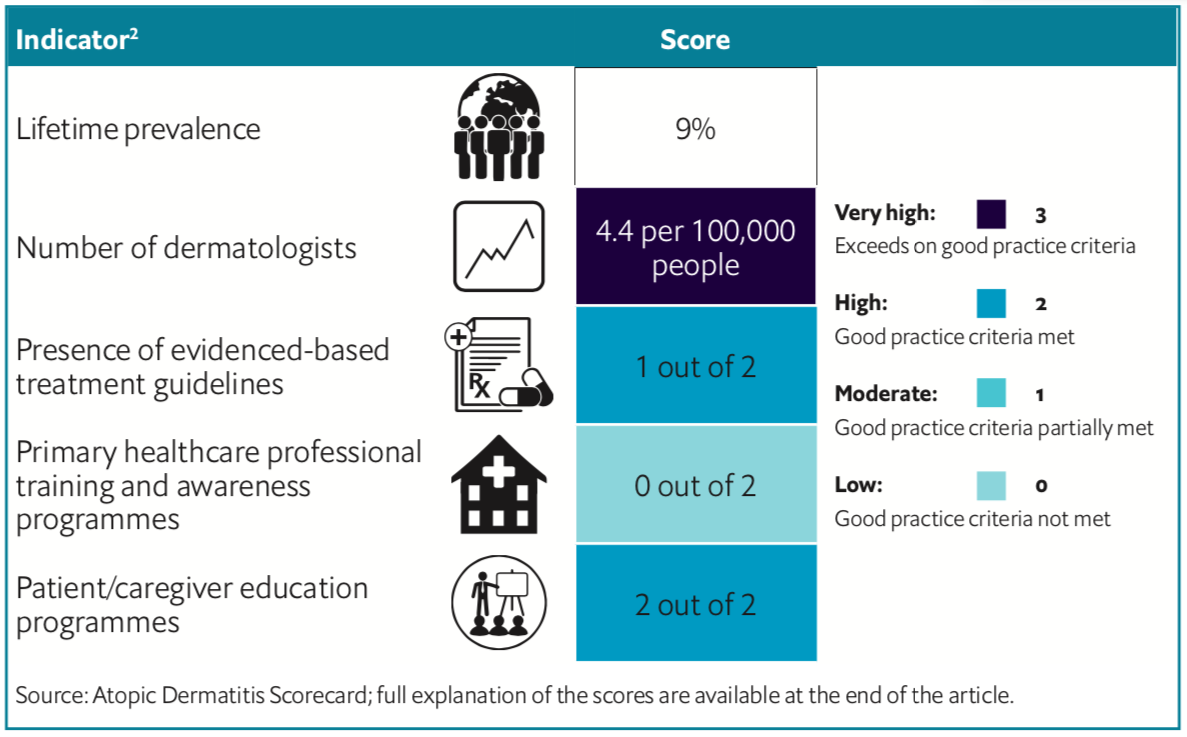The Israeli health system provides universal coverage to all citizens and permanent residents through its National Health Insurance.1 The Economist Intelligence Unit analysed the country’s policy approach to the management of atopic dermatitis through an Atopic Dermatitis Scorecard.2
In meeting the 12 scorecard indicators, Israel did relatively well compared with the eight countries analysed. It scored strongly on indicators that measured the use of quality of life measures and patient/ caregiver education programmes.
The scorecard was developed on the findings of a literature review and input from an expert panel of healthcare professionals and patients. The scorecard contained indicators of importance to the management of the disease, with scored values (ranging from 0 to 3) for a range of policy indicators, including the provision of care and support for patients and caregivers.

Increasing prevalence of AD
The scorecard indicates that Israel has the lowest lifetime prevalence, at 9%, of the eight countries analysed. The UK was the next lowest at 11%, but the range was significant with Australia at 32%.
Most prevalence studies in Israel have focused on the non-adult population, and while the lifetime prevalence is low compared with the other countries analysed, a 2014 study of around 845,000 Israeli adolescents revealed a steady increase.
Researchers analysed data for an 11-year period ( January 1st 1998 to December 31st 2008) and found that there was a three-fold increase in the prevalence rate for AD for both genders.3 The overall prevalence of AD was 0.5% among adolescent males and 0.7% among adolescent females. The researchers say: “Whether due to changes in demography or lifestyle habits, the marked rise in AD in the adolescent and young adult populations reflected in our study requires public health planning and allocation of resources for the prevention, management and further research of the disease.”
An older Israeli adolescent study has also noted higher prevalence over time, finding AD increased from 5.9% to 8.7% from 1997 to 2003.4
Management of AD
At 4.4, the number of dermatologists per 100,000 population in Israel is the highest of the eight countries, with Taiwan coming second highest at 3.9. There are Israeli guidelines for the management of AD but they are often not used (and they date from 2004). Broadly, medical societies and associations refer to US and European treatment guidelines, but there is no standard recommendation for neither the diagnosis nor treatment protocol of AD in Israel, according to Dr Felix Pavlotsky, head of the Israeli Dermatology Board Committee .
The absence of nationally adopted guidelines could potentially lead to the inconsistent management of patients by health service providers. The availability of primary healthcare professional training and awareness around AD is low in Israel, as is the case in most of the other countries analysed in the scorecard.2
Among the scorecard countries, Israel was the only one that provides patient and caregiver education programmes, which gave it the highest score of 2 marks.
Full scorecard results for Israel are available in the downloadable article
REFERENCES








